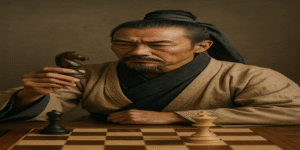Effective decision making lies at the heart of strategic management, leadership, and organisational success. In a rapidly changing environment, decision-makers must adopt structured frameworks to evaluate options, reduce uncertainty, and achieve optimal outcomes. Among the most influential models are the SWOT Analysis, Eisenhower Matrix, OODA Loop, and the Five Whys Technique. Each offers a distinct approach—ranging from strategic evaluation to root-cause analysis—and can be adapted to business, military, and personal decision contexts.
This essay explores these four decision-making models, analysing their theoretical foundations, practical applications, and comparative effectiveness. It draws from scholarly literature, including management science, psychology, and systems thinking, using the Harvard Referencing System.
1.0 SWOT Analysis
Developed in the 1960s by Albert Humphrey at the Stanford Research Institute, SWOT (Strengths, Weaknesses, Opportunities, Threats) remains one of the most popular tools for strategic planning and situational assessment (Goria et al., 2019). Its core purpose is to evaluate both internal (strengths and weaknesses) and external (opportunities and threats) factors influencing an organisation or decision.
Theoretical Basis:
The SWOT framework aligns with systems thinking—a holistic approach to understanding interrelated organisational components (Kasser, 2018). It encourages reflection on capabilities, environmental dynamics, and potential risks. According to Singh et al. (2019), SWOT promotes cognitive mapping, allowing managers to visualise strategic positioning.
Example:
Apple Inc. continually performs SWOT analyses to anticipate competitive pressures, such as threats from Android ecosystems and opportunities in wearable technology. By doing so, it maintains strategic agility.
Limitations:
Despite its utility, SWOT is qualitative and often subjective. Over-reliance can lead to overgeneralisation without quantitative prioritisation (Merrill, 2023). Modern adaptations like SWOT-AHP (Analytic Hierarchy Process) combine qualitative and quantitative decision criteria (Fury, 2024).
Key Insight:
SWOT’s strength lies in diagnostic clarity—helping leaders understand where they are before deciding where to go.
2.0 Eisenhower Matrix
Named after President Dwight D. Eisenhower, this matrix categorises tasks based on urgency and importance, forming four quadrants:
- Do (Urgent & Important)
- Schedule (Not Urgent but Important)
- Delegate (Urgent but Not Important)
- Eliminate (Not Urgent & Not Important)
Purpose and Application:
The Eisenhower Matrix is rooted in time management theory and cognitive prioritisation (Covey, 1989). It assists individuals and organisations in task triage, ensuring that strategic goals receive appropriate focus. Fury (2024) argues that this model integrates executive function psychology—the ability to delay gratification and plan effectively.
Example:
In healthcare administration, task prioritisation using the Eisenhower Matrix improves patient flow and resource allocation, distinguishing critical care needs (urgent and important) from administrative tasks (important but not urgent).
Limitations:
However, this model assumes clear differentiation between urgency and importance, which is not always objective. Emotional or cultural factors can distort priority judgments (McNeil et al., 2024).
Key Insight:
The Eisenhower Matrix transforms decision-making from reactive to strategically proactive, aligning time allocation with long-term value creation.
3.0 OODA Loop (Observe–Orient–Decide–Act)
Developed by Colonel John Boyd of the U.S. Air Force, the OODA Loop is a dynamic decision-making framework originally designed for combat situations (Bradford & Fitzhugh, 1999). It emphasises situational awareness, adaptability, and speed—allowing decision-makers to outmanoeuvre competitors by cycling through the loop faster.
Stages Explained:
- Observe: Collect data and perceive the environment.
- Orient: Analyse context using prior experience and mental models.
- Decide: Choose a course of action.
- Act: Implement and assess the results.
Theoretical Relevance:
The OODA model embodies cybernetic feedback—continuous learning through observation and correction (Bosio, 2022). It integrates cognitive psychology and systems theory, promoting flexible, non-linear thinking (Goria et al., 2019).
Example:
In business, companies like Tesla apply the OODA loop to respond quickly to technological shifts and competitor actions. Agile teams use it to iterate product features rapidly, embodying “decision speed as a competitive advantage.”
Limitations:
The model’s effectiveness diminishes if data collection is poor or if decision-makers lack orientation accuracy. According to Kasser (2018), rapid cycles without strategic reflection can lead to decision fatigue.
Key Insight:
The OODA Loop demonstrates that adaptability trumps rigidity; effective decision-making is not just about correctness but responsiveness.
4.0 The Five Whys Technique
Developed by Sakichi Toyoda, founder of Toyota Industries, the Five Whys Technique aims to identify the root cause of a problem through iterative questioning (Lazarus et al., 2024). By repeatedly asking “Why?”—typically five times—teams move beyond symptoms to uncover underlying process failures.
Theoretical Foundation:
The method aligns with root cause analysis (RCA) and lean management principles (Weidner, 2017). It fosters critical inquiry, a skill central to quality improvement and organisational learning (Singh et al., 2019).
Example:
Toyota applied the technique to identify defects in production lines. For instance, when a machine stopped working, engineers asked:
- Why did the machine stop? → Overloaded motor.
- Why was it overloaded? → Bearing not lubricated.
- Why was it not lubricated? → Pump malfunction.
- Why did the pump fail? → Metal scrap entered the system.
- Why was scrap present? → Lack of filter.
The solution was to install a filter—a permanent fix addressing the root cause.
Limitations:
While simple and powerful, the Five Whys assumes linear causality, which may oversimplify complex systems. Goria et al. (2019) suggest combining it with Ishikawa (Fishbone) Diagrams or Systems Mapping for multi-factorial problems.
Key Insight:
The Five Whys Technique exemplifies how structured curiosity drives innovation and continuous improvement.
Comparative Evaluation
| Model | Primary Use | Strengths | Limitations | Ideal Context |
| SWOT | Strategic analysis | Comprehensive situational overview | Subjective and qualitative | Long-term planning |
| Eisenhower Matrix | Prioritisation | Improves productivity | Over-simplifies task complexity | Time management |
| OODA Loop | Rapid decision-making | Enhances adaptability and speed | Requires accurate observation | Dynamic environments |
| Five Whys | Root cause analysis | Simple and effective | Assumes linear causation | Problem-solving and quality control |
These models can be integrated for maximum effectiveness. For example, a manager may conduct a SWOT analysis to identify challenges, apply the Eisenhower Matrix to prioritise responses, use the OODA Loop for adaptive execution, and employ the Five Whys to resolve obstacles encountered along the way.
Decision-making is not a single act but a structured cognitive process that balances analysis, intuition, and adaptability. The four models discussed—SWOT, Eisenhower Matrix, OODA Loop, and Five Whys—offer complementary tools for navigating uncertainty. While SWOT and the Eisenhower Matrix emphasise strategic clarity and prioritisation, the OODA Loop and Five Whys focus on agility and problem diagnosis.
As contemporary environments grow increasingly volatile, leaders must move beyond intuition and embrace integrative frameworks. The future of decision-making lies in combining structured models with data analytics, emotional intelligence, and systems thinking—a synthesis that transforms information into insight and insight into intelligent action.
References
Bosio, N. (2022). An Analysis of the Relationship between Contemporary Western Military Theory, Systems Thinking, and their Key Schools-of-Thought. Australian Defence Force Academy.
Bradford, J. & Fitzhugh, E. (1999). Decision-Making Under Attack: Information Warfare. U.S. Department of Defense.
Covey, S. (1989). The 7 Habits of Highly Effective People. New York: Simon & Schuster.
Fury, S. (2024). How to Think More Effectively: The 5 Best Critical Thinking Models for Problem Solving. London: Routledge.
Goria, S., Humbert, P. & Roussel, B. (2019). Information, Knowledge and Agile Creativity. Springer.
Kasser, J. (2018). Systems Thinker’s Toolbox: Tools for Managing Complexity. Taylor & Francis.
Lazarus, M., Bush, R. & McNeil, S. (2024). Examining the Intersection of Strategic Thinking and Continuous Process Improvement. Military Medicine, Oxford Academic.
Merrill, P. (2023). The Right Tool for the Right Job. Quality Progress, American Society for Quality.
Singh, R. A. M., Samaddar, M., & Sharma, D. (2019). The Future of Critical Thinking: Education for an Uncertain World. Springer.
Weidner, R. (2017). Delivering Value: The Benefits of Cultural Agility. University of Wisconsin.









